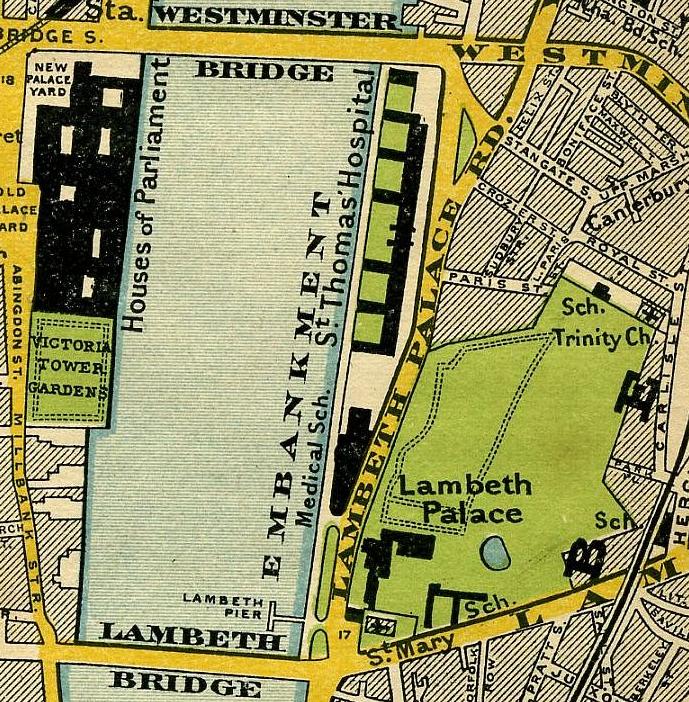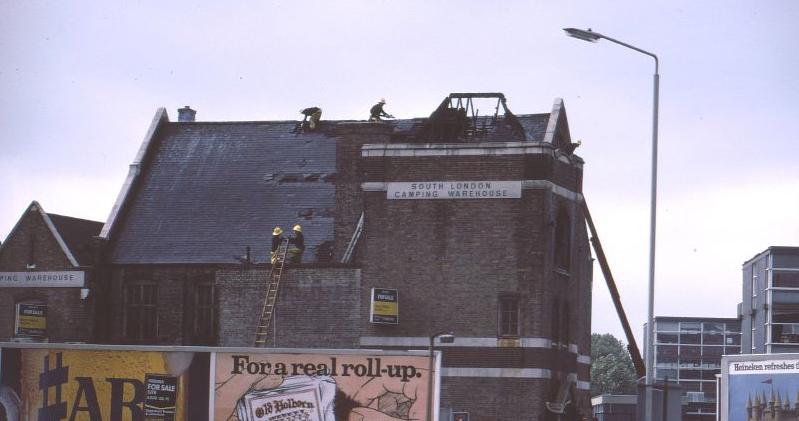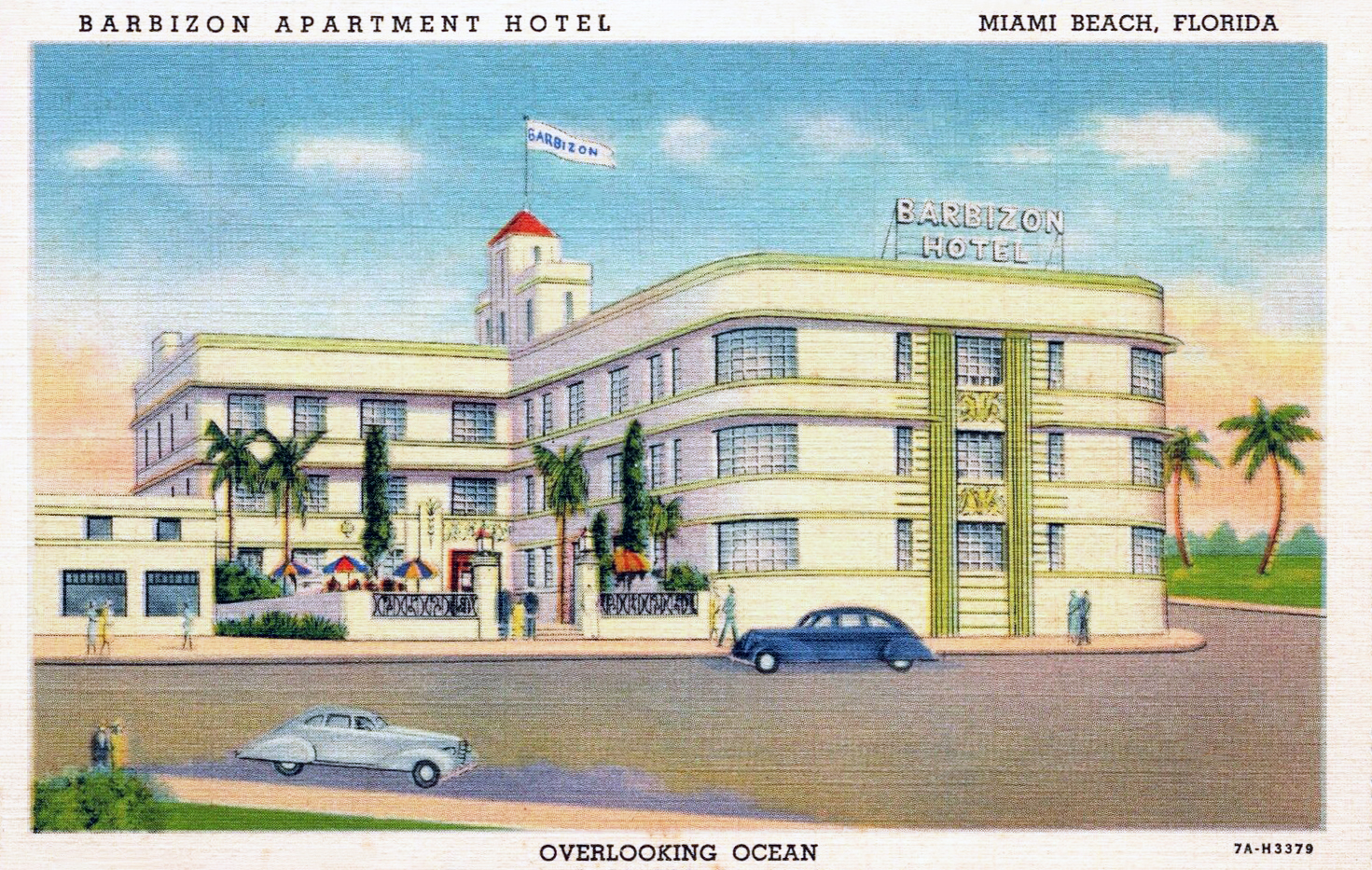|
Lambeth Fire Station
The Lambeth Fire Station is the former headquarters of the London Fire Brigade. It is a Moderne-style building built in 1937. It included a drill tower, behind, built at the same time. It also included a ramp to a water-level station for fireboats. The building is a Grade II listed building In the United Kingdom, a listed building is a structure of particular architectural or historic interest deserving of special protection. Such buildings are placed on one of the four statutory lists maintained by Historic England in England, H .... Gallery File:Lambeth fire station.jpg, Building frontage File:Lambeth, London Fire Brigade Headquarters drill tower - geograph.org.uk - 832475.jpg, Drill tower, where exercises could be watched by hundreds from balconies on the headquarters building File:Lambeth River Fire Station - geograph.org.uk - 832587.jpg, Lambeth River Fire Station, with the Firedart, in 2008 References Fire stations in the United Kingdom Grade II listed b ... [...More Info...] [...Related Items...] OR: [Wikipedia] [Google] [Baidu] |
Lambeth Fire Station From The Southwest
Lambeth () is a district in South London, England, which today also gives its name to the (much larger) London Borough of Lambeth. Lambeth itself was an ancient parish in the county of Surrey. It is situated 1 mile (1.6 km) south of Charing Cross, across the river from Westminster Palace. The population of the London Borough of Lambeth was 303,086 in 2011. The area experienced some slight growth in the medieval period as part of the manor of Lambeth Palace. By the Victorian era, the area had seen significant development as London expanded, with dense industrial, commercial and residential buildings located adjacent to one another. By this point, there were distinct localities (like Vauxhall) appearing on the map, and a separate parish of South Lambeth was created in 1861. The changes brought by World War II altered much of the fabric of Lambeth. Subsequent development in the late 20th and early 21st centuries has seen an increase in the number of high-rise buildings. The ... [...More Info...] [...Related Items...] OR: [Wikipedia] [Google] [Baidu] |
London Fire Brigade
The London Fire Brigade (LFB) is the Fire department, fire and rescue service for London, the capital of the United Kingdom. It was formed by the Metropolitan Fire Brigade Act 1865 (28 & 29 Vict. c. 90), under the leadership of superintendent Eyre Massey Shaw. It has 5,992staff, including 5,096 operational firefighters and officers based at 102 fire stations (plus one river station). The LFB is led by the Commissioner for Fire and Emergency Planning, a position currently held by Andy Roe. The brigade and Commissioner are overseen by the Greater London Authority, which in 2018 took over these responsibilities from the London Fire and Emergency Planning Authority (LFEPA). In the 2015-16 financial year the LFB received 171,488 emergency calls. These consisted of: 20,773 fires, 48,696 false alarms of fire and 30,066 other calls for service. As well as firefighting, the LFB also responds to road traffic collisions, floods, shut-in-elevator, lift releases, and other incidents such a ... [...More Info...] [...Related Items...] OR: [Wikipedia] [Google] [Baidu] |
Moderne Architecture
Moderne architecture, also sometimes referred to as Style Moderne, Art Moderne, or simply Moderne, Jazz Age Moderne, jazz modern or Jazz Style, describes certain styles of architecture popular from 1925 through the 1940s. It is closely related to Art Deco. Art Deco and Moderne architecture: terms and evolution The terminology is not very firm; during the time when the styles were used, they were simply known as ''Moderne''. A distinction between subtypes was later introduced by David Gebhard: ''Zigzag'', ''Streamline'', and ''PWA (Public Works Administration) Moderne''. The term ''Art Deco'' was only popularized by Bevis Hillier in 1968 and then used quite indiscriminately, and therefore some researchers prefer to use it only for the decorative forms and, when referring to architecture, only for the highly ornamented buildings of the late 1920s. Originating in the International Exhibition of Modern Decorative and Industrial Arts held in Paris in 1925, the style has expre ... [...More Info...] [...Related Items...] OR: [Wikipedia] [Google] [Baidu] |
Fireboats
A fireboat or fire-float is a specialized watercraft with pumps and nozzles designed for fighting shoreline and shipboard fires. The first fireboats, dating to the late 18th century, were tugboats, retrofitted with firefighting equipment. Older designs derived from tugboats and modern fireboats more closely resembling seafaring ships can both be found in service today. Some departments would give their multi-purpose craft the title of "fireboat" also. They are frequently used for fighting fires on docks and shore side warehouses as they can directly attack fires in the supporting underpinnings of these structures. They also have an effectively unlimited supply of water available, pumping directly from below the hull. Fireboats can be used to assist shore-based firefighters when other water is in low supply or is unavailable, for example, due to earthquake breakage of water mains, as happened in San Francisco due to the 1989 Loma Prieta earthquake. Some modern fireboa ... [...More Info...] [...Related Items...] OR: [Wikipedia] [Google] [Baidu] |
Grade II Listed Building
In the United Kingdom, a listed building is a structure of particular architectural or historic interest deserving of special protection. Such buildings are placed on one of the four statutory lists maintained by Historic England in England, Historic Environment Scotland in Scotland, in Wales, and the Historic Environment Division of the Department for Communities in Northern Ireland. The classification schemes differ between England and Wales, Scotland, and Northern Ireland (see sections below). The term has also been used in the Republic of Ireland, where buildings are protected under the Planning and Development Act 2000, although the statutory term in Ireland is " protected structure". A listed building may not be demolished, extended, or altered without permission from the local planning authority, which typically consults the relevant central government agency. In England and Wales, a national amenity society must be notified of any work to be done on a listed building ... [...More Info...] [...Related Items...] OR: [Wikipedia] [Google] [Baidu] |
Fire Stations In The United Kingdom
Fire is the rapid oxidation of a fuel in the exothermic chemical process of combustion, releasing heat, light, and various reaction products. Flames, the most visible portion of the fire, are produced in the combustion reaction when the fuel reaches its ignition point temperature. Flames from hydrocarbon fuels consist primarily of carbon dioxide, water vapor, oxygen, and nitrogen. If hot enough, the gases may become ionized to produce plasma. The color and intensity of the flame depend on the type of fuel and composition of the surrounding gases. Fire, in its most common form, has the potential to result in conflagration, which can lead to permanent physical damage. It directly impacts land-based ecological systems worldwide. The positive effects of fire include stimulating plant growth and maintaining ecological balance. Its negative effects include hazards to life and property, atmospheric pollution, and water contamination. When fire removes protective vegetation, heavy r ... [...More Info...] [...Related Items...] OR: [Wikipedia] [Google] [Baidu] |
Grade II Listed Buildings In The London Borough Of Lambeth
Grade most commonly refers to: * Grading in education, a measurement of a student's performance by educational assessment (e.g. A, pass, etc.) * A designation for students, classes and curricula indicating the number of the year a student has reached in a given educational stage (e.g. first grade, second grade, K–12, etc.) * Grade (slope), the steepness of a slope * Graded voting Grade or grading may also refer to: Music * Grade (music), a formally assessed level of profiency in a musical instrument * Grade (band), punk rock band * Grades (producer), British electronic dance music producer and DJ Science and technology Biology and medicine * Grading (tumors), a measure of the aggressiveness of a tumor in medicine * The Grading of Recommendations Assessment, Development and Evaluation (GRADE) approach * Evolutionary grade, a paraphyletic group of organisms Geology * Graded bedding, a description of the variation in grain size through a bed in a sedimentary rock * Meta ... [...More Info...] [...Related Items...] OR: [Wikipedia] [Google] [Baidu] |






